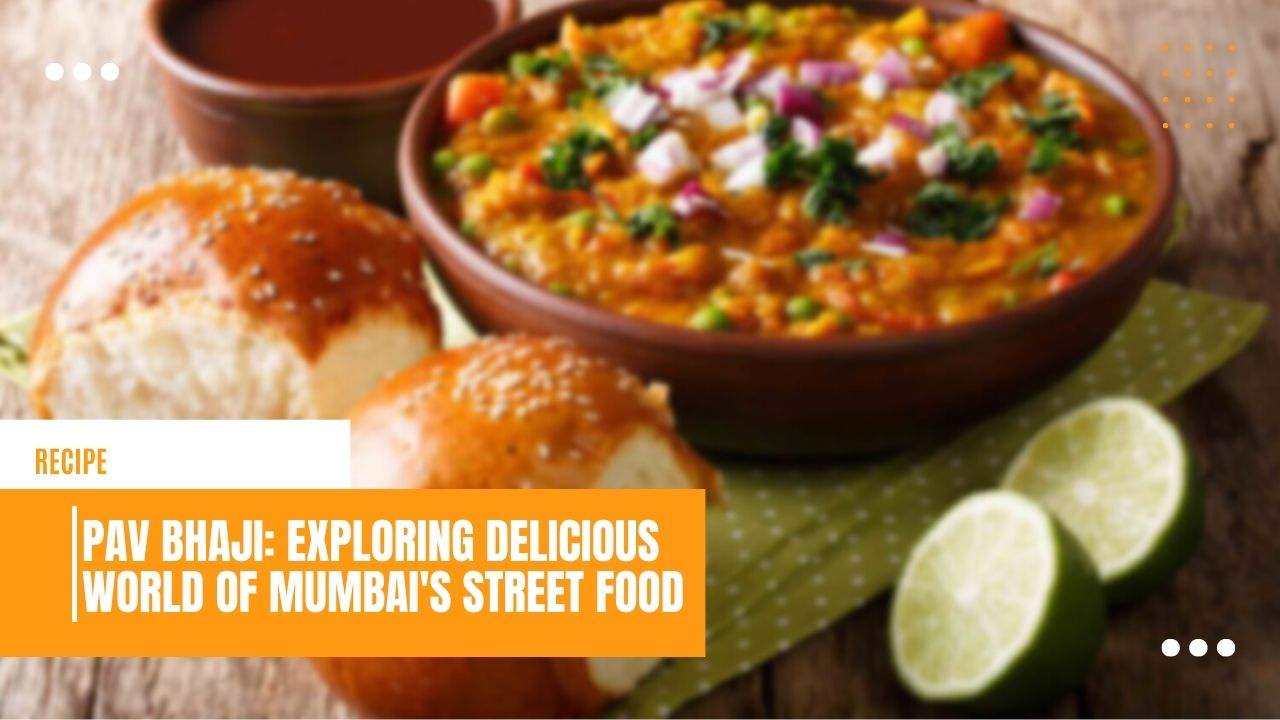Pav Bhaji is a beloved Indian street food dish that has gained popularity all over the world. It is a spicy and flavorful vegetable curry that is served with a soft buttered bread roll, called Pav. The dish originated in Mumbai, India, and has since become a favorite among foodies everywhere. In this blog, we will explore the history, preparation, and variations of Pav Bhaji.
History of Pav Bhaji
The origins of Pav Bhaji can be traced back to Mumbai, India, where it was invented in the 1850s. The dish was initially created as a quick and filling meal for the mill workers of Mumbai. The workers needed a nutritious and affordable meal that could be prepared quickly and eaten on the go, and thus Pav Bhaji was born.
Over the years, the dish became more popular, and it was soon served in street food stalls and restaurants all over Mumbai. Today, Pav Bhaji is a beloved Indian street food dish that is enjoyed by people all over the world.
Preparation of Pav Bhaji
The preparation starts with a medley of vegetables, including potatoes, peas, onions, tomatoes, and capsicum (bell pepper), that are boiled and mashed together. This is then combined with a special blend of spices, including cumin, coriander, turmeric, chili powder, and garam masala, to create the signature flavor of the dish.
The mixture is then cooked on a griddle with butter, and the Pav bread rolls are toasted with butter on the same griddle. The Pav is served alongside the Bhaji curry, and diners are free to add additional butter, lemon juice, and chopped onions as desired.
Variations of Pav Bhaji
While the classic version is made with a vegetable curry, there are several variations of the dish that have emerged over the years. Some of the most popular variations include:
-
Cheese Pav Bhaji: This version of the dish adds a generous amount of grated cheese to the Bhaji curry, giving it a rich and creamy flavor.
-
Mushroom Pav Bhaji: This version of the dish adds mushrooms to the vegetable mixture, giving it a meatier and more savory flavor.
-
Paneer Pav Bhaji: This version of the dish adds paneer (Indian cottage cheese) to the Bhaji curry, giving it a creamy and luxurious texture.
-
Jain Pav Bhaji: This version of the dish is made without onions and garlic, making it suitable for those who follow a Jain diet.
Pav Bhaji Recipe
Ingredients
- 4 medium-sized potatoes, boiled and mashed
- 1 cup green peas, boiled and mashed
- 1 medium-sized onion, finely chopped
- 2 medium-sized tomatoes, finely chopped
- 1 medium-sized capsicum (bell pepper), finely chopped
- 1 tablespoon ginger-garlic paste
- 2 green chillies, finely chopped
- 2 tablespoons butter
- 1 tablespoon oil
- Salt to taste
- 1 tablespoon cumin seeds
- 1 tablespoon coriander powder
- 1 teaspoon turmeric powder
- 1 tablespoon red chilli powder
- 1 tablespoon pav bhaji masala
- Lemon wedges and chopped onions, for garnish
- 8-10 Pav bread rolls
Instructions
- In a large mixing bowl, combine the mashed potatoes and peas, and set aside.
- In a pan, heat the butter and oil over medium heat.
- Add cumin seeds and let them splutter.
- Add chopped onions and sauté until they turn translucent.
- Add ginger-garlic paste and green chillies, and sauté for a minute.
- Add chopped tomatoes and capsicum, and sauté until the tomatoes are soft and mushy.
- Add salt, coriander powder, turmeric powder, red chilli powder, and pav bhaji masala, and mix well.
- Add the mashed potatoes and peas mixture to the pan, and mix well.
- Mash the mixture with a masher or the back of a ladle until it becomes smooth and creamy.
- Add water as needed to adjust the consistency of the mixture.
- Let the mixture cook for 10-15 minutes, stirring occasionally, until the flavors are well combined.
- To serve, heat the Pav bread rolls on a griddle with butter.
- Serve the Bhaji curry with the buttered Pav bread rolls, garnished with chopped onions and lemon wedges.
Note: You can adjust the spice level of the dish according to your taste. You can also add additional vegetables like carrots and cauliflower to the mixture, if desired.
Read Also: Sweet Relief: Savoring the Flavors of Summer Desserts
It is a delicious and popular Indian street food dish that has captured the hearts and taste buds of people all over the world. Whether you prefer the classic version or one of the many variations, there is no denying the irresistible flavor and aroma of this beloved dish.
So the next time you find yourself in Mumbai or at an Indian restaurant, be sure to try a plate of Pav Bhaji. You won’t be disappointed by the spicy, flavorful, and filling goodness that this dish has to offer.
FAQs
Q. What is the origin of the dish?
A. It originated in Mumbai, India, and was created as a quick and filling meal for the mill workers in the 1850s.
Q. What are the different types of breads that can be used with pav bhaji?
A. The most commonly used bread for the dish, other types of bread such as naan, roti, or even sliced bread can be used as well.
Q. Can it be made ahead of time?
A. Yes, it can be made ahead of time and stored in the refrigerator for up to 3 days. When reheating, add a little bit of water to the mixture to adjust the consistency.
Q. Can it be made without butter?
A. Yes, can be made without butter, but it may not have the same authentic taste as it does with the use of butter.
Q. What are some common variations?
A. Some popular variations include cheese Pav Bhaji, mushroom Pav Bhaji, and paneer Pav Bhaji.
Q. Can it be made spicy or mild?
A. Yes, the spice level of the dish can be adjusted to suit individual taste preferences.
Q. What vegetables are typically used in Pav Bhaji?
A. The vegetable mix typically includes potatoes, peas, onions, tomatoes, and capsicum (bell pepper).
Q. Can it be made vegan?
A. Yes, can be made vegan by using oil instead of butter and omitting any dairy-based toppings.
Q. Is it a healthy dish?
A. While Pav Bhaji is a delicious and filling dish, it is not considered to be a particularly healthy dish due to its high carbohydrate and fat content.
Q. Can it be served as a main dish or a side dish?
A. Pav Bhaji can be served as a main dish or a side dish, depending on the portion size and accompanying sides.



